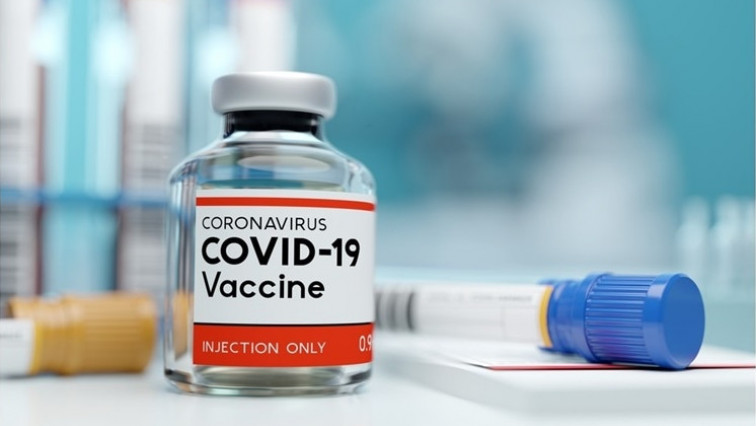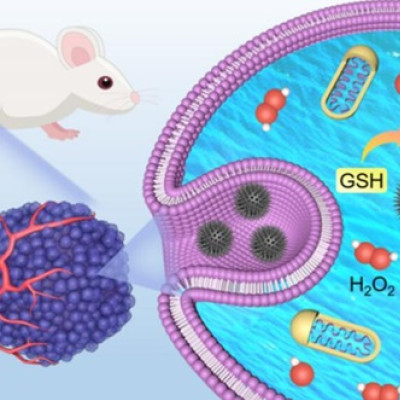The emergence of new variants of the severe acute respiratory syndrome coronavirus 2 (SARS-CoV-2) creates a necessity to develop novel vaccine platforms and vaccine candidates with enhanced performance. Nanoparticle- (NP) based vaccine platforms are very effective for vaccine development, as they can be administered through various routes, have been known to elicit innate and adaptive immune responses, and can be easily designed to generate vaccines targeting any disease.
Virus-like particles (VLP) are NPs that have previously been found to be effective against hepatitis B virus and human papillomavirus (HPV). Further, VLPs produced in plants have shown promising results during preclinical testing.
Plant viruses such as tobacco mosaic viruses (TMV) are known to elicit an effective immune response. In a recent Vaccines study, scientists generate a VLP type NP platform made of recombinant viral antigens conjugated with TMV virions.
How was the vaccine constructed and formulated?
The full-length spike (S) protein of SARS-CoV-1 and the Middle East respiratory syndrome coronavirus (MERS) have been reported to be associated with an increased viral infection and serious pulmonary immune pathology in preclinical systems and experimental animals, respectively. Considering this evidence, the scientists in the present study designed a receptor-binding domain (RBD) antigen vaccine candidate which bears the amino acids (331 – 632) of the S1 subunit of the SARS-CoV-2 spike (S) protein.
The stability of the antigen was further enhanced by fusing the RBD sequence with the constant domain (Fc) of human immunoglobulin G1 (IgG1) to obtain the vaccine candidate CoV-RBD121. This was subsequently produced in N.benthamania plants and purified. The recombinant TMV strain containing an N-terminal lysine residue (TMN NtK) was produced in N.benthamania plants and purified. The vaccine formulation, CoV-RBD121-NP, was generated by conjugating CoV-RBD121 to TMN NtK conferring VLP features to the antigen enhancing its immunogenicity.
This vaccine formulation remained stable for a 12-month period at temperatures of 2-8 °C and 22-28 °C, thus confirming the feasibility of the formulation for global distribution.
CoV-RBD121-NP exhibited significant immunogenicity
The immune response elicited by CoV-RBD121-NP against SARS-CoV-2 was assessed in female C57BL/6 mice. The mice were administered 15 micrograms (mg) or 45 mg of CoV-RBD121-NP subcutaneously with or without the adjuvant 7909 CpG.
The mice immunized with CoV-RBD121-NP were compared to mice that received two 45 mg doses of CoV-RBD121, which is the antigen alone without TMV, or to mice that received the vehicle. Blood collection was done on days 0, 12, and 28 to assess the antibodies. Mice were euthanized at day 42 and final sera were collected, along with the spleen for interferon g (IFNg) analysis.
Enzyme-linked immunosorbent assay (ELISA) was used to assess total IgG reactivity exhibited by the collected serum against the RBD of the SARS-CoV-2 S protein. Recombinant histidine-tagged S1 (S1- His) was employed as the capture antigen in the assays.
It was found that most of the mice that received 15 mg CoV-RBD121-NP with or without conjugation with adjuvant displayed a low IgG response at day 12 after the first immunization. A strong IgG response was observed on day 28 in mice that received either the 15 mg or 45 mg dose of the vaccine with no adjuvant.
In the case of mice that received the adjuvanted vaccine formulation, the 45 mg dose produced a strong IgG response at day 28 that was also similar to the response observed at day 42. The stronger immune response produced by CoV-RBD121-NP, which was conjugated to TMV-NtK-NP, when compared to the unconjugated CoV-RBD121 shows that TMV-NtK-NP plays a role in enhancing the immune response elicited by the vaccine.
CpG adjuvant in the CoV-RBD121-NP vaccine formulation promotes IgG class switching
A balance between the two types of helper T-cells Th1 and Th2 is required for an effective immune response. The scientists subsequently performed IgG isotype analysis on sera collected at day 42.
The IgG1 levels are considered to be indicative of the Th2 response, whereas both IgG2a and IgG2c levels represent the Th1 response. The vehicle-treated mice and unconjugated CoV-RBD121 treated mice showed very low levels of IgG1 and IgG2 levels.
In mice that received either of the doses of CoV-RBD121-NP along with the adjuvant, there was a significant induction of IgG2 levels and a dose-dependent increase in levels was also observed. Notably, the levels of IgG1 were found to be higher in mice that received the non-adjuvanted CoV-RBD121-NP vaccine.
The IgG1 and IgG2 ratio was found to be more than 1 in mice that received non-adjuvanted CoV-RBD121-NP vaccine and less than 0.1 in mice that received the adjuvanted CoV-RBD121-NP. This observation suggests that the CpG adjuvant may promote class switch between IgG1 and IgG2.
The spleen harvested from mice that received adjuvanted CoV-RBD121-NP formulation showed a higher number of IFNg secreting cells, thus further supporting the higher Th1 response observed in these mice. When compared to the vehicle-treated mice, an increase in IFNg secreting cells was not observed in the spleen of mice that received the non-adjuvanted CoV-RBD121-NP formulation or those that received CoV-RBD121.
CoV-RBD121-NP elicits high antibody titers against SARS-CoV-2
The ability of the immune response elicited by the CoV-RBD121-NP and CoV-RBD121 vaccine formulations to neutralize SARS-CoV-2 infection was assessed by performing neutralization activity assays using the collected mice sera.
For example, the plaque reduction neutralization test (PRNT) assay determined neutralizing activity based on a 50% reduction in the SARS-CoV-2 virus plaques in VeroE6 cells. In this assay, a single 45 mg dose of non-adjuvanted CoV-RBD121-NP vaccine formulation showed the highest effect.
The assay that determined neutralizing activity based on reduction of infection by a pseudovirus coated with the SARS-CoV-2 S protein in 293T cells was performed. A similar effect was also seen in this assay, where the highest neutralizing titers were observed for the 45 mg dose of non-adjuvanted CoV-RBD121-NP vaccine formulation.
The neutralization activity assay that measured the 50% reduction in cytopathic effect (CPE) in VeroE6 cells infected with SARS-CoV-2 was additionally performed. High titers of antibodies were detected in mice that received 45 mg doses of adjuvanted and non-adjuvanted formulations of CoV-RBD121-NP.
When geometric mean titers were calculated for each treatment group using the CPE values, a dose-response to the candidate vaccine was evident. To this end, the researchers concluded that the adjuvant CpG does not provide any additional benefit by enhancing the levels of neutralization titers.
The immune response elicited by CoV-RBD121-NP against various coronavirus spike proteins
The scientists also utilized the VaxArray Coronavirus SeroAssay Kit to pooled sera from the various treatment groups collected at day 42 for the presence of antibodies that reacted with SARS-CoV-2 S proteins from seven coronaviruses, as well as with the S1 and S2 domains from SARS-CoV-2.
Antibody reactivity towards full-length SARS-CoV-2 S protein was detected in the serum from mice from any of the CoV-RBD121-NP groups and in the CoV-RBD121 group. Additionally, sera from the CoV-RBD121-NP groups displayed antibodies that reacted with the S1 domain, whereas the CoV-RBD121 group exhibited low reactivity. None of the sera from any of the groups reacted with the S2 domain of SARS-CoV-2 S protein nor with the S proteins belonging to the other coronaviruses.
Analysis was performed to investigate if a correlation exists between virus neutralization titers and antibody reactivity towards the SARS-CoV-2 S proteins. A significant correlation with an R2 of 0.77 was observed between the neutralization titers calculated based on CPE values and the VaxArray signal for the S1 domain in the CoV-RBD121 group and any of the CoV-RBD121-NP groups.
Conclusion
The present study demonstrates that the TMV-based NP vaccine platform can be effectively implemented for developing new vaccines for SARS-CoV-2 and its variants. A stable vaccine candidate, CoV-RBD121-NP, was generated in this study by combining the SARS-CoV-2 RBD with the TMV-like NP.
CoV-RBD121-NP may prove to be an effective vaccine candidate against SARS-CoV-2, as it elicited a strong immune response and elicited antibodies that performed well in neutralization activity assays. Further evaluations of the CoV-RBD121-NP vaccine candidate are required to explore its potential utility as a prophylactic treatment for COVID-19.
Read the original article on News Medical.







